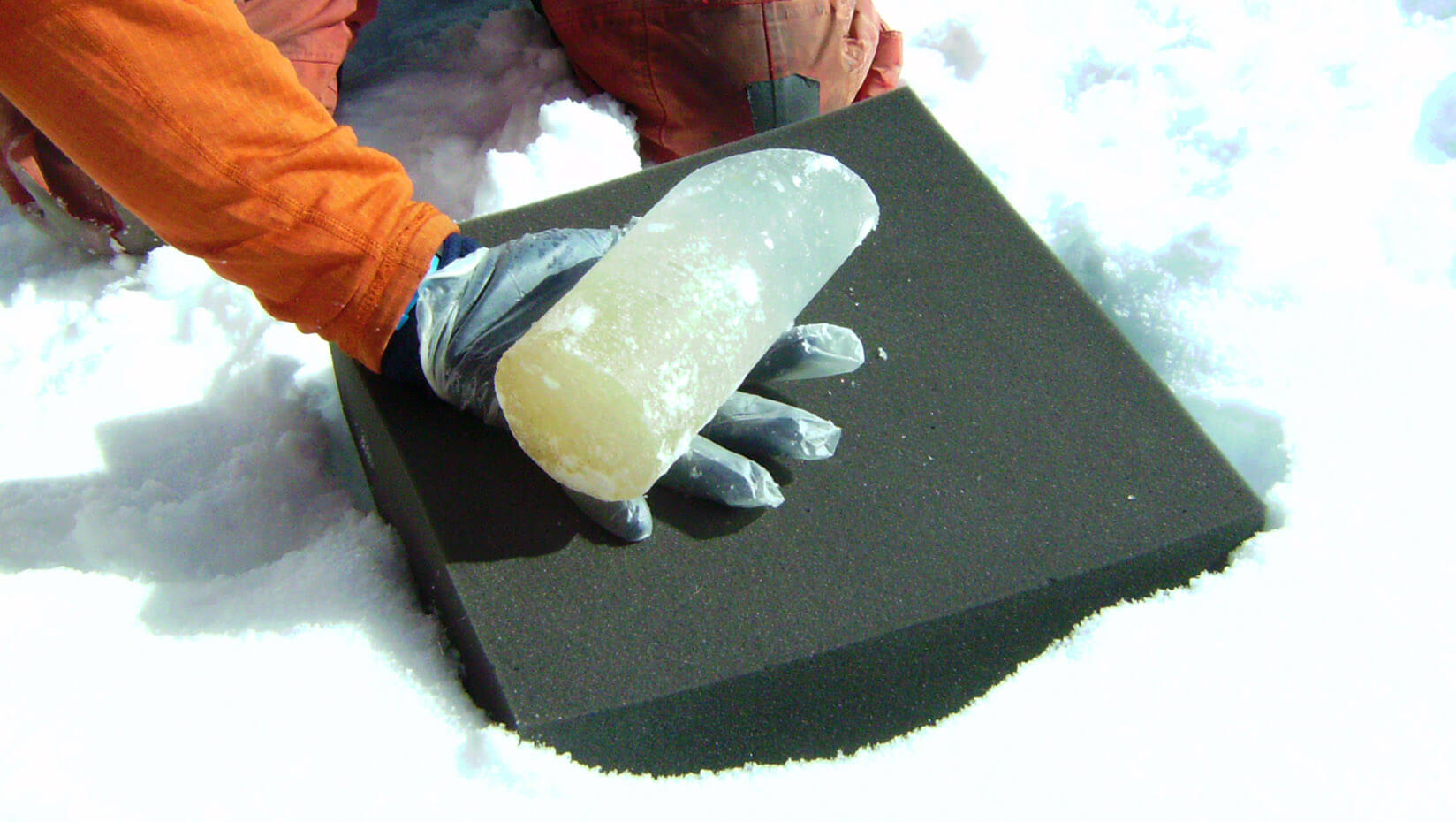
Winski to analyze Alaskan ice core to understand fire conditions in 21st century
The National Science Foundation awarded Dominic Winski $137,419 to reconstruct 1,500 years of summer climate and wildfire history in Alaska, western Canada and Siberia using an ice core from Denali National Park.
Studies that combine past records of summer climate and wildfire are critically needed, says Winski. “Right now, the climate and landscape are changing. We know that in many areas, this means more wildfires, but we do not yet fully understand the relationship between climate and wildfire as we move into the future.”
Winski, a research assistant professor with the Climate Change Institute, is principal investigator of the project. UMaine is the lead institution in the collaborative study with the University of New Hampshire, Dartmouth College and the University of California, Irvine that was awarded $570,428 in total by the NSF.
“The Arctic is warming more rapidly than any other region of the world,” says Winski. “To anticipate and prepare for a warming Arctic, it is critical to better understand past variations in summertime climate and their associated environmental effects, particularly during warm periods such as the Medieval Climate Anomaly (MCA), circa 1000–1300 Common Era (CE).”
Wildfires in the Arctic are projected to increase with continued summer warming. “Wildfires in that region can induce climate changes on a global scale via carbon emissions, in addition to regional impacts on Arctic landscapes and ecosystems already stressed by human activities,” says Winski.
To place the current trends in perspective, studies that combine paleorecords of summer climate and wildfire are critically needed where wildfires and climate fluctuations occur over longer time periods than covered by direct observations, he says.
“The goal of the proposed research is to improve our understanding of relationships between summertime climate and wildfire activity, focusing especially on the MCA when temperatures were perhaps as warm as the 20th century but without the complicating influence of widespread fire ignition and suppression by humans,” says Winski.
To accomplish this goal, Winski plans to develop the most comprehensive suite of North Pacific fire and summer climate proxy records since 500 CE.
Because compounds released by wildfires now can be measured in ice cores, it’s possible to develop a robust fire record capable of comparison with regional paleoclimate reconstructions.
With that record, the researchers will address three primary questions:
- How has Alaskan climate varied during the last 1,500 years?
- How did fire regime characteristics — patterns, frequency and intensity — naturally respond to past warm summer conditions?
- Are there consistent relationships between fire regime and climate?
The team will develop records of summer atmospheric circulation that will be regionally unique and fill a critical gap in the suite of North Pacific paleoclimate records.
Researchers will use an ice core from Denali National Park in Alaska, gathered from some of the highest and most inaccessible peaks in the country.
“The ‘Denali Ice Core’ is the highest-quality and most rigorously dated ice core from the North Pacific region,” Winski says. “Using this unique ice core means that we will produce fire records with synchronously dated information on past temperature, rainfall and wind patterns.”
The research will open a window into a time when Alaskan temperatures were about as warm as today, but with a much smaller human influence.
“By studying this time, we are hoping to provide land managers and citizens with a roadmap of likely fire conditions in the 21st century,” he says. “We may soon experience major changes to our forests and grasslands that we will need to plan for if we hope to safely occupy fire-prone landscapes in the future.”
The team, which includes UMaine professor Karl Kreutz, will analyze the archive Denali ice core for black carbon, which is derived from both biomass and fossil fuel combustion, as well as for organic aromatic acids and monosaccharide anhydride, which are produced solely from biomass burning.
The project will support undergraduate students at each participating institution.
And, through the NSF-supported School of Ice, faculty at historically Black colleges and minority-serving institutions will learn about ice cores and climate change.
STEM kits centered on the Denali ice core record also will be developed for underserved K–12 students in Maine and Alaska. And the team’s findings will be presented and displayed at the Denali National Park visitor center in Talkeetna.
Contact: Beth Staples, beth.staples@maine.edu
